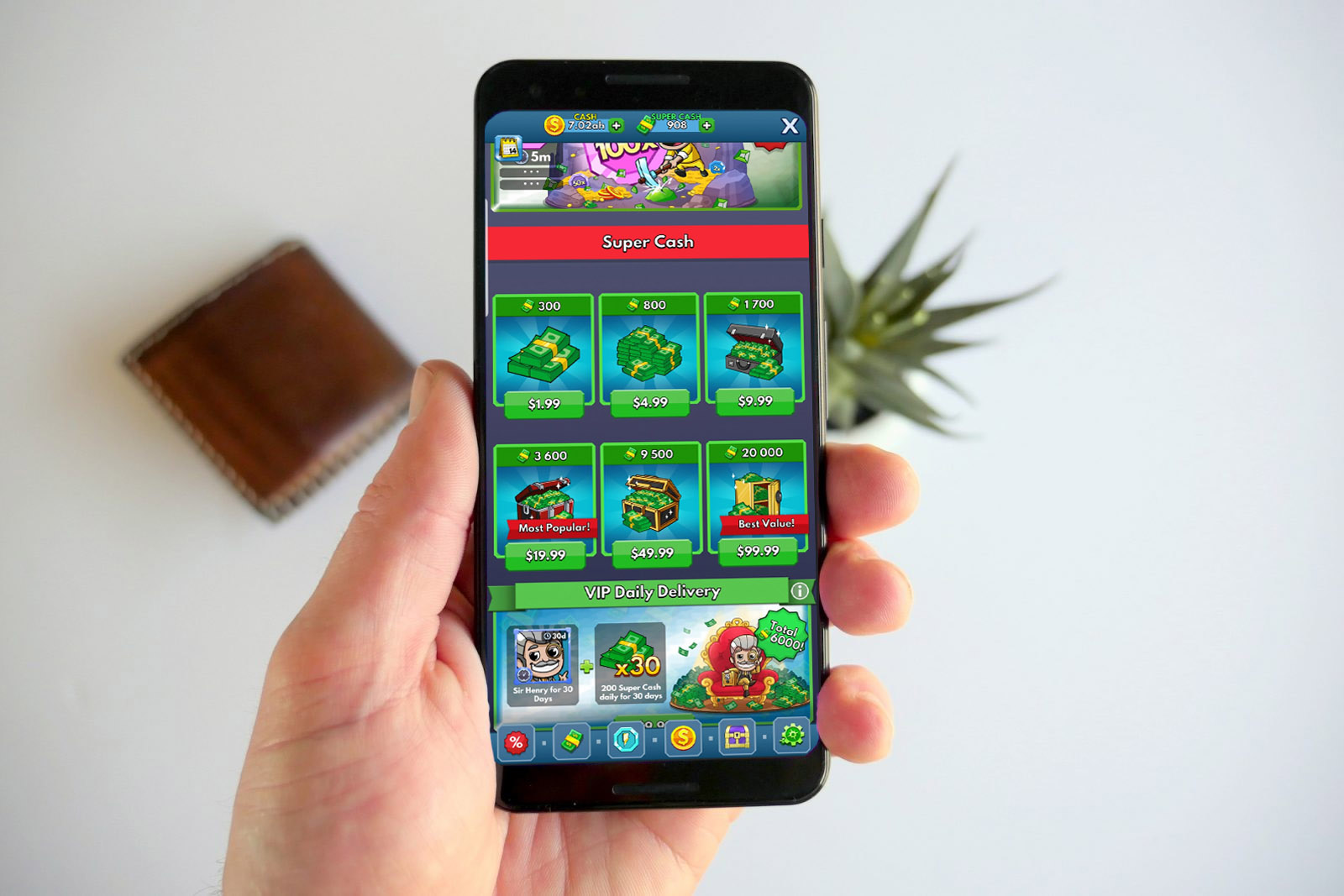If you enjoy playing app games on your phone, then you're no stranger to the myriad that's available from bejeweled clones to Tetris to "idle" games. There's something out there for everyone. However, when it comes to app games, there's a relatively new trend. While running out of energy or lives during a game is common, it seems that these games want a cash grab for energy or life refills. You may be hesitant to spend money on these refills and who can blame you. That's why we're going to delve deeper into currency in games to gain a bit more insight into this practice, and how it all works.
Ad-Free Games
Pokémon GO is probably one of the most popular games you've come across, and there are a lot of urban myths out there about it. You've seen the players all gathered together in a park to take out a gym and win the mon holding the gym, or maybe they're defeating the gym for their team. While you can play Pokémon for free without ever needing to make a purchase, there are some catches. If you're into saving and storing all the moon you can for special raids or to trade, then you've likely run out of storage. Or if you're spending the day raiding, then you've run out of passes. This game is for you to spend your money on it. That's why it's a perfect example of how app game currency works. In this example, a player can gain up to 50 coins per gym that your Pokémon defends. But saving up those 50 coins for enough to make a purchase can be challenging. So, let's look at the cost: 100 Pokémon coins go for $0.99 USD. Because this game doesn't generate ad revenue, and it's free to play, this is how the game remains "free" by selling each coin at a penny. Thus, Niantic can make a profit from the players.

Idle Games
Unlike ad-free games like Pokémon GO, idle games generally include ads. If you play a game like Idle Miner Tycoon, then you've casually opened your game to check on the progress, collect the currency, and spend your currency on opening a new area. The downside to this type of game isn't only the ads that you can watch to double the in-game currency, which to be honest isn't a bad incentive, it's also the amount of time it takes to complete a mine or goal. Spending real money on the game to buy boosts to increase in-game income potential or help the game go faster is the temptation here. However, this game gives you the ability to earn two types of currency, coins from various mines and "cash" from leveling-up certain mines. While you don't have the option to make a purchase to turn off ads, you aren't forced to watch an ad without an incentive, and you can play idle games to completion without buying anything with your actual money. With 300 units costing $1.99 (USD), it is one of the more expensive microtransactions.
Other Games
Games like Merge Dragons or the PokerStars mobile app game have different strategies when it comes to in-game currency and microtransactions. Games like Merge Dragons are loaded down with ads for no payout. It is like that to generate ad revenue consistently. Thus, keeping the game free for players. However, while you can continue playing, reaching various goals in the game can be hard. You do have two different types of currency: coins and gems. However, you can only purchase the gems at a whopping $4.99 (USD) per 100 units. You can also collect gems in the game. However, it is a slow process. For games that use real money as in-game currency like the PokerStars Casino mobile app, in-game currency is relatively straightforward. You'll see every dollar you spend represented in the game, and you're able to win real cash. It is an ad-free game where you can play as much as you want. Games like these are great for passing the time, and if you're going to spend money on a game anyway, you might as well develop some strategy skills and win some money while you're at it. There's not a lot to complain about when you're not trying to convert your dollar amount to an in-game currency that may or may not be enough to achieve the goal you wish to accomplish.
Overall, the in-game currency is something that's here to stay. Whether you spend your money to help win a game or speed up the completion of a game is up to you. The downside to this trend is it has taken some of the fun out of playing games, especially when an energy refill can take several hours, and you feel like the game forces you to make a microtransaction to continue enjoying the game. In the end, you want to have fun with the game you're playing and not feel forced to watch ads or make a transaction you don't want to make. That's why clarity with a game, and most of all, fun and playability, are what make app games successful.
from Phandroid https://ift.tt/2YZn998
via IFTTT
No comments:
Post a Comment